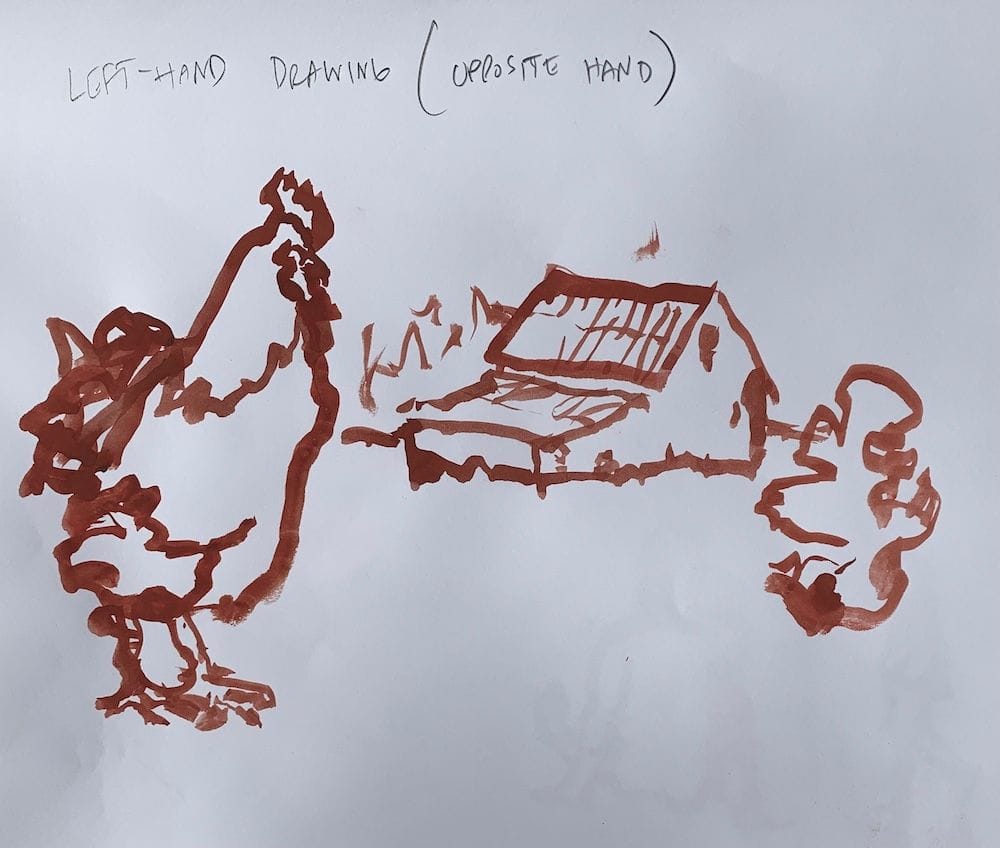Opposite Hand Drawing
Opposite hand drawing is a fun beginner exercise that helps improve your skills and shake off creative ruts. Using your non-dominant hand forces you to slow down, observe closely, and discover a more expressive, playful line quality in your drawings.

When I feel stuck in my studio, I change gears. I might switch from watercolor to acrylic, shift to a different subject, or shake things up with a fresh drawing practice.
That’s where opposite hand drawing comes in. Using your non-dominant hand to sketch feels awkward and clumsy at first, but it’s a surefire way to break routine. It puts you in a different mindset, forces you to slow down, and brings a sense of play back into the process.
I’m big on the feeling of creating art — am I exploring and carefree, or am I just repeating old patterns? Opposite hand drawing helps me reset, and I hope this exercise gives you a fresh spark too. You can even combine it with other drills: try a blind contour with your opposite hand, flip your paper upside down, or mix multiple exercises together. The sky’s the limit.

Motivational Reminder
At first, it’ll feel clumsy — like learning to write again. But that’s the point. Opposite hand drawing isn’t about making a masterpiece; it’s about training yourself to see differently. Keep at it, and you’ll find your dominant-hand drawings get sharper, freer, and more alive.
Next Steps
Add this exercise to your warm-ups, then explore more beginner-friendly drills:
👉 Semi-Blind Contour Drawing →
👉 Negative Space Drawing →




